Federation Arts and Crafts style
[previous page: Federation Filigree style Next page: Federation Bungalow style]
 |
| Redleaf, 8 Redleaf Ave, Wahroonga NSW |
The Federation Arts and Craft style had its origins in England, where architects were reacting to the impersonal nature of the Industrial Revolution.
- Crafts and handiwork were emphasised to give architecture the "human touch".
- Australian Federation Arts and Crafts buildings were generally small-scale to medium-scale and predominantly residential.
From Sydney Architecture:
- As its name implies this (Arts and Craft) style was concerned with the integration of art into everyday life through the medium of craftsmanship.
- There is a strong flavour of morality, with stress on the truthful use of materials and the honest expression of function.
- Arts and Crafts buildings are unpretentious and informal, evoking an atmosphere of comfortable familiarity.
 |
| Hollowforth, Neutral Bay, by Architect Edward Jeaffreson Jackson |
William Morris
In nineteenth-century England... William Morris, (was the) father of the Arts and Crafts movement. Dismayed by the effects of the Industrial Revolution and inspired by Ruskin, Morris tried to put art into a broadly based social context through the reestablishment of handicraft methods reminiscent of a rural, pre-industrial age.Arts and Crafts Architects
- C. F. A. Voysey and Philip Webb were important Arts and Crafts architects in England. Also Hugh Baillie Scott.
- In the United States, Gustav Stickley promoted the ‘Craftsman’ image in architecture, interior design and furniture.
- In Australia the important Arts and Crafts Architects were Victorians Walter Butler, Harold Desbrowe-Annear, and Guyon Purchas. Later architects were Rodney Alsop, WAM Blackett and Philip Hudson.
- In Sydney a different Arts and Crafts style was developed by Horbury Hunt,and George Sydney Jones. Later archtiects were Edward Jeaffreson Jackson, FG Castleden and BJ Waterhouse.
- Robin Dodds was the key figure in Queensland before he moved to Sydney.
- Kenneth Milne was the key figure in South Australia, and Eustace Cohen in Western Australia
- from Pioneers of Modernism by Harriet Edquist.
|
|
- Designers aimed for informality in planning, massing, windows and landscaping.

The Highlands, 1890's heritage listed shingle style, 9 Highlands Avenue, Wahroonga, NSW, by famed architect John Horbury Hunt - The roof is a dominant element, featuring gables (with barges or parapets) and/or hips of medium to steep pitch and prominent eaves.
|
|
- Tall, tapering chimneys, battered wall- buttresses and bay windows are characteristic elements of the style.
|
|
- Pebbledash stucco (roughcast) was commonly used as an exterior wall finish, together with other materials having earthy, ‘natural’ colours and textures.

Matakana, 28 Lucinda Avenue, Wahroonga - Interiors frequently display timber panelling and sturdy ceiling beams. Touches of Art Nouveau detail are common, both externally and internally. - Sydney Architecture:

Babworth House interior
Arts and Crafts Style
One of the key design and architecture styles of the 19th and early 20th centuries.Typical features are:
- white, roughcast render

Keynsham 29 Shellcove Road NEUTRAL BAY - everything being exposed to explain the construction such as wooden pegs in beams, and bare stone and brick
'St Ellero' 5 Appian Way Burwood, New South Wales - pebble dash
- stone dressed window and door openings
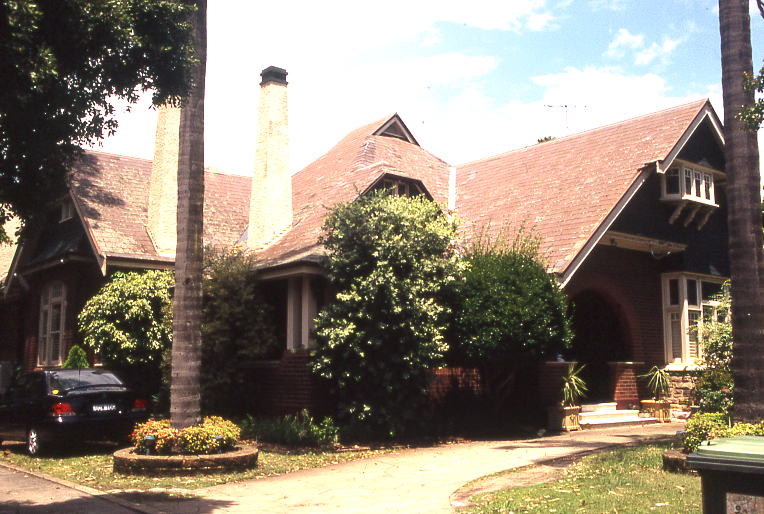
'Mounterry' 318 Liverpool Road Burwood NSW - low rooflines
- asymmetric frontage

Tulkiyan is of State significance as an important, intact example of a fine Arts & Crafts suburban villa
Certain tendencies stand out:
- reformist neo-gothic influences,
|
- rustic and "cottagey" surfaces,

- repeating designs,
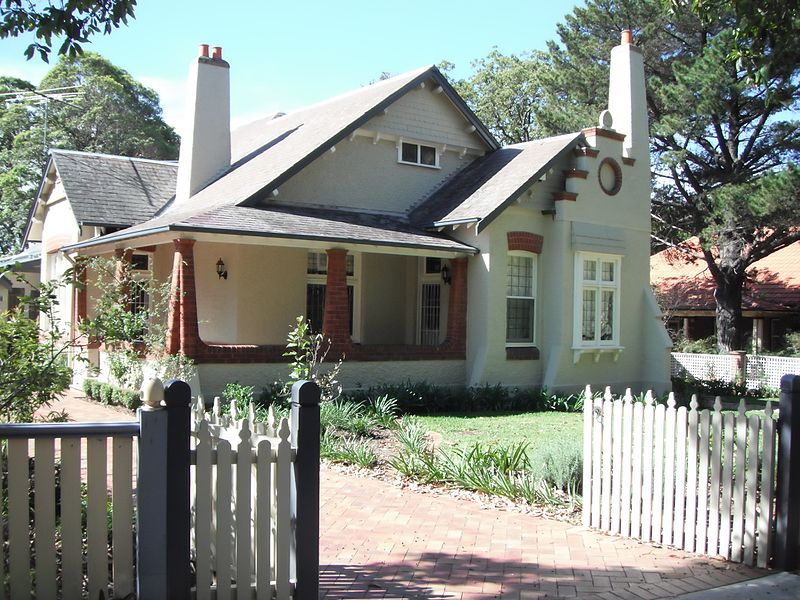
'Erica' 21 Appian Way Burwood NSW Australia - vertical and elongated forms.

Federation Arts & Crafts Home, Bellevue Hill - Some products were deliberately left slightly unfinished, resulting in a certain rustic and robust effect,

'Ailsa' 33 Shellcove Road, Neutral Bay - Showcases the beauty inherent in craft

Cowper Rose, Cowper Street, Randwick NSW
American Influences
- The East Coast Shingle Style promoted by architect Henry Hobson Richardson
- The Craftsman magazine published by furniture maker Gustav Stickley, promoting small houses, gardens and furniture
- Californian designers Greene and Greene and Louis Easton
- Chicago architect Frank Lloyd Wright
|
|
|











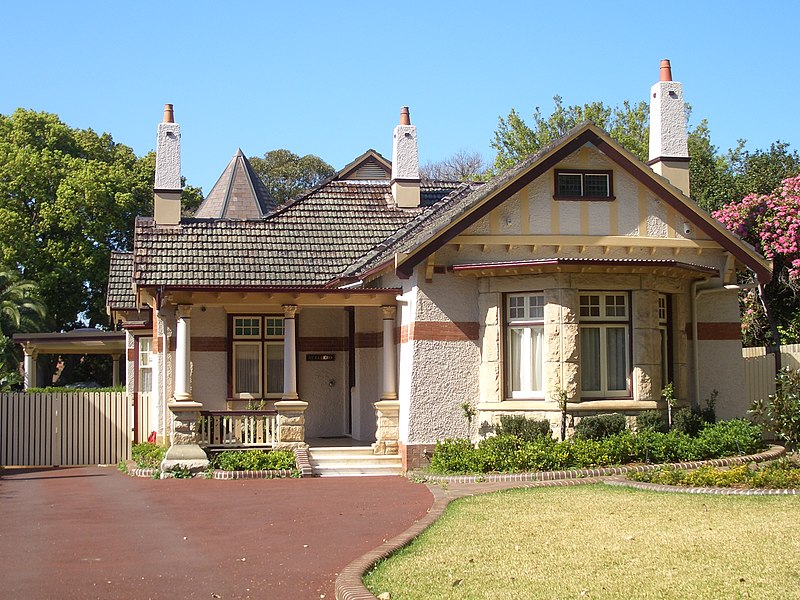
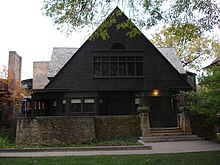
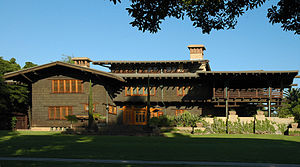

No comments:
Post a Comment